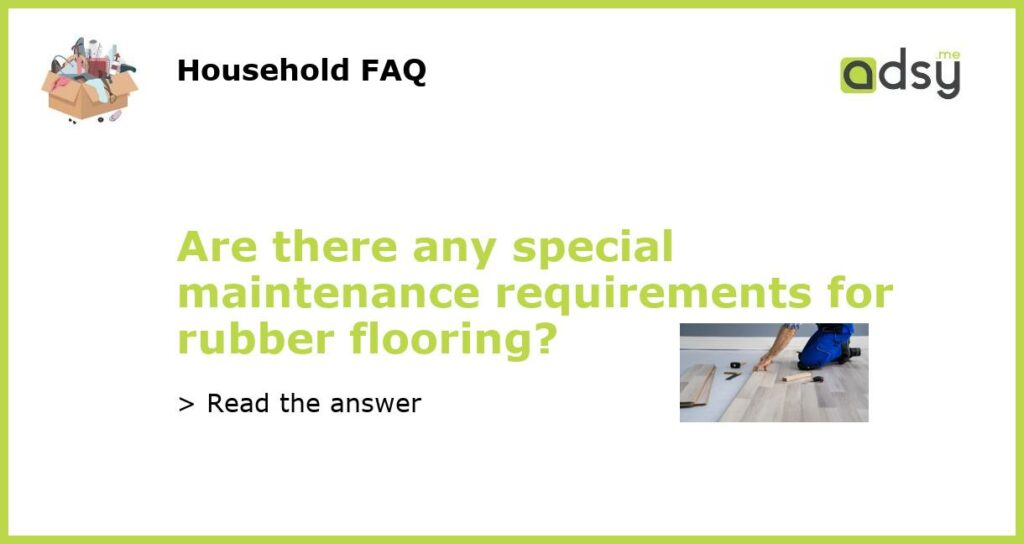Regular Cleaning and Maintenance for Rubber Flooring
When it comes to maintaining rubber flooring, regular cleaning and maintenance are key. Rubber flooring is a popular choice for commercial and residential spaces due to its durability, slip resistance, and ease of cleaning. However, like any type of flooring, rubber flooring requires proper care to ensure its longevity and performance. Let’s explore some special maintenance requirements for rubber flooring.
Sweep or Vacuum Regularly
One of the best ways to keep your rubber flooring looking its best is to sweep or vacuum it regularly. This helps to remove dirt, dust, and debris that can accumulate on the surface. A soft-bristle broom or a vacuum cleaner with a floor brush attachment can be used for this purpose. Regular sweeping or vacuuming prevents small particles from scratching or damaging the rubber surface.
Clean with a Neutral pH Cleaner
When it comes to cleaning rubber flooring, it’s important to use a neutral pH cleaner. Harsh chemicals or acidic cleaners can damage the rubber surface and strip away its protective coating. Instead, opt for a mild, non-abrasive cleaner specifically designed for rubber flooring. Mix the cleaner with water according to the manufacturer’s instructions and use a mop or microfiber cloth to clean the surface. Avoid using excess water as rubber flooring is not waterproof.
Remove Stains Promptly
If you notice any stains on your rubber flooring, it’s important to remove them promptly. Wipe up spills as soon as they occur using a damp cloth or mop. For tougher stains, you may need to use a specialized rubber floor cleaner or a mild solvent. Always test any cleaning product or solvent on a small, inconspicuous area of the flooring to ensure it does not cause any damage or discoloration.
Protect from Heavy Furniture
Heavy furniture can cause indentation or permanent damage to rubber flooring, especially if it is not properly protected. To prevent this, use furniture pads or coasters under the legs of heavy furniture pieces. This helps to distribute the weight evenly and prevent any damage to the rubber surface. Additionally, avoid dragging heavy furniture across the floor as it can also cause scratches or tears.
Inspect and Repair as Needed
Regularly inspect your rubber flooring for any signs of damage, such as cuts, tears, or loose edges. If you notice any issues, it’s important to address them promptly to prevent further damage and maintain the integrity of the flooring. For small cuts or tears, you can use a rubber adhesive or patch kit to repair the damage. If the damage is extensive or beyond repair, it may be necessary to replace the affected area or seek professional assistance.

